Abstract
Acquiring laparoscopic surgical skills involves initial learning of cognitive and motor skills followed by refinement of those skills. The successful use of a virtual reality simulator depends on the quality of the interface for the human-computer interaction and this can be determined by the initial learning rate. MIST VR, a part-task virtual reality laparoscopic simulator, provides objective assessment of psychomotor skills and can generate an overall score for performance, based upon errors made and time taken for six different tasks. This study analysed the rate of early task/instrument/computer familiarization on consecutive scores achieved by surgically experienced and naive individuals. Eleven surgeons, 18 medical students and seven non-medical personnel were tested on the simulator up to ten consecutive times, within a 2-week period. Performance data from every task and repetition were analysed to obtain individual scores of task performance. The calculation of overall score penalized errors far more heavily than total time taken, with high scores indicating poor performance. The surgeon-computer interface generated a rapid and significant early familiarization curve up to the third session on the simulator, with significant reductions in both time taken and total contact errors made. These results suggest that MIST VR represents a high quality interface. Surgeons scored consistently and significantly better than other subjects on all tasks. For surgically naive individuals, it was possible to predict the level of laparoscopic skills performance that would be attained after overcoming initial simulator learning curve, by studying their initial score. Overall scores reflected surgical experience and suggest that the simulator is measuring surgically relevant parameters. MIST VR provides a validated and much needed method for objective assessment of laparoscopic skills, for a variety of surgical disciplines.
Full text
PDF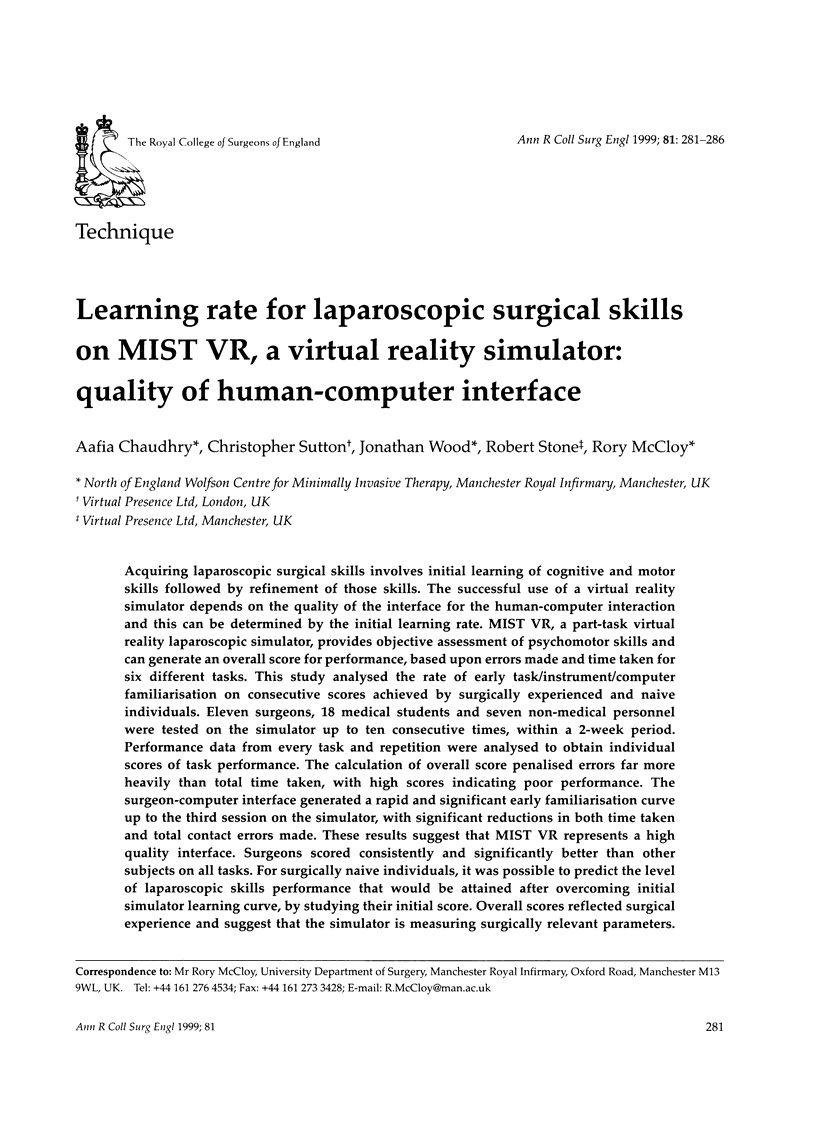
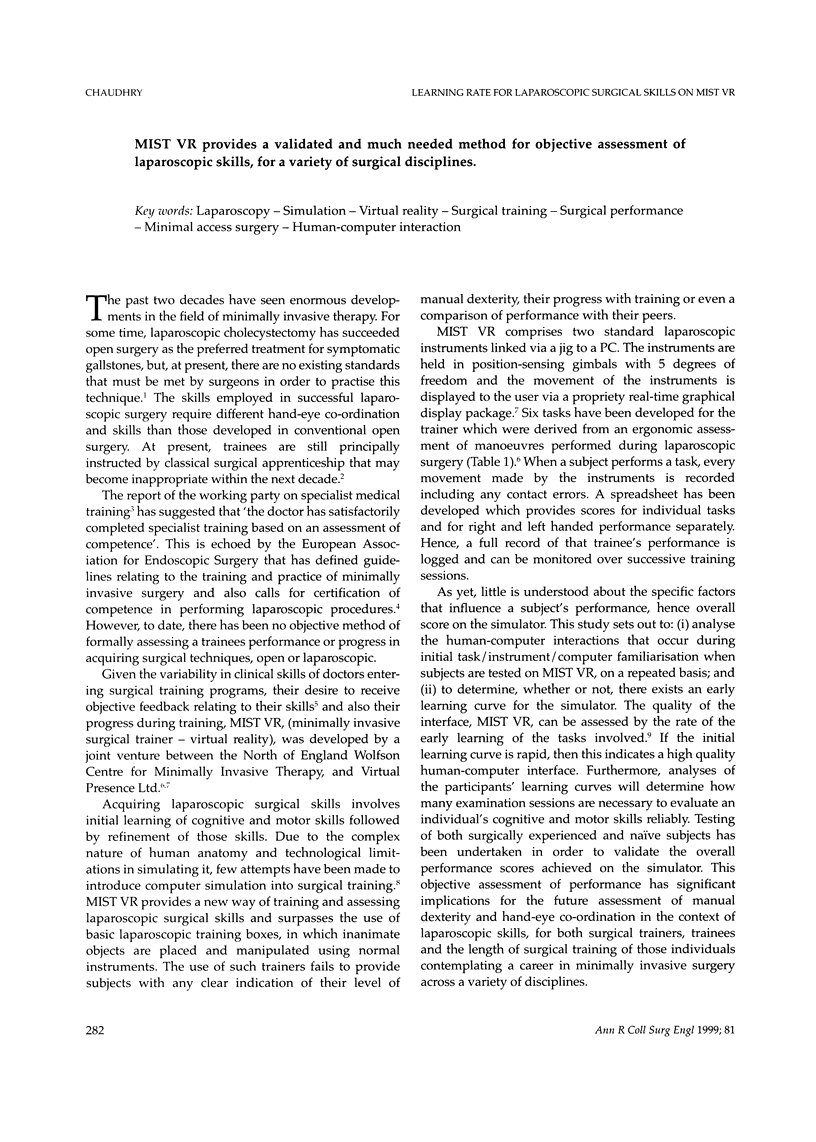
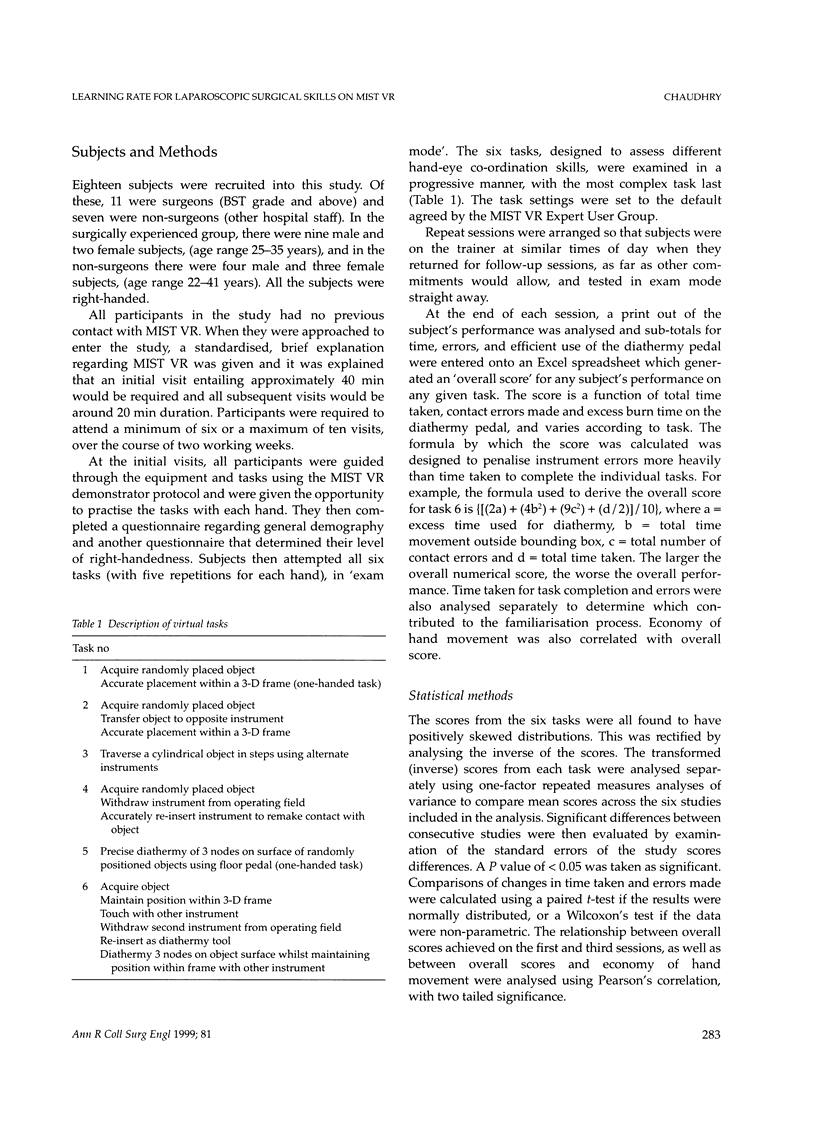

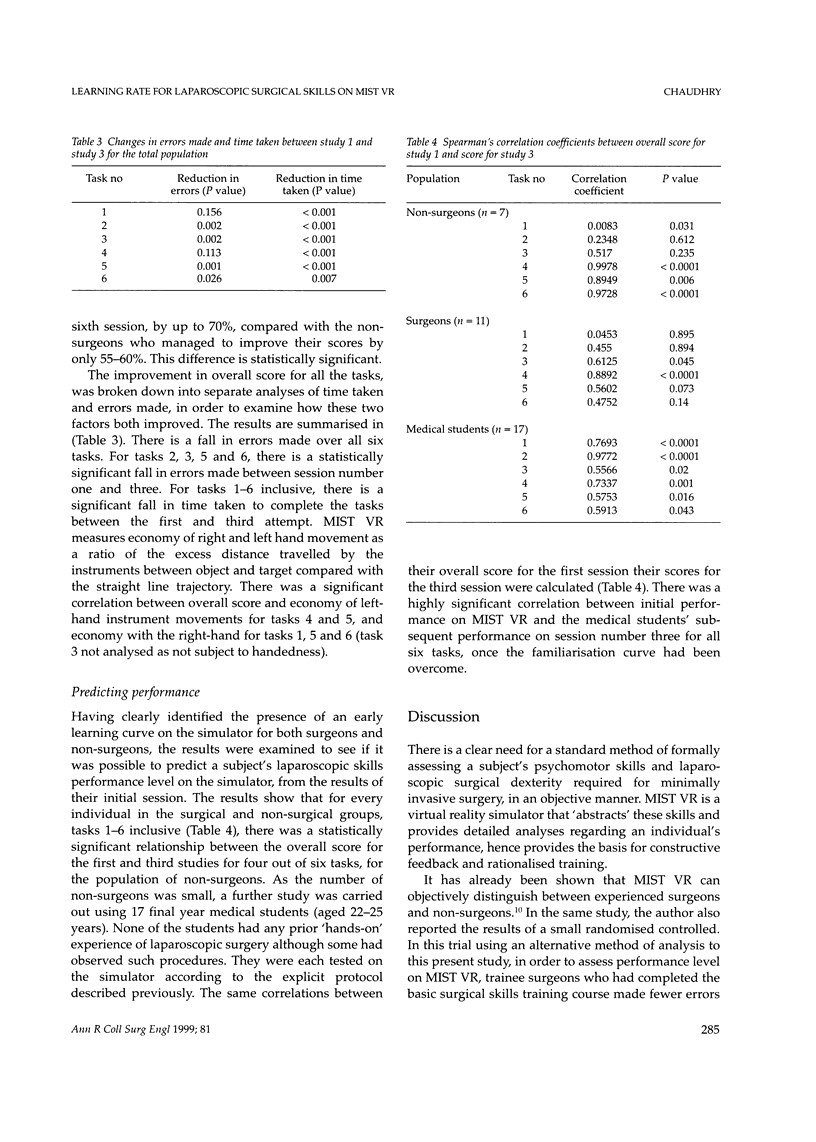
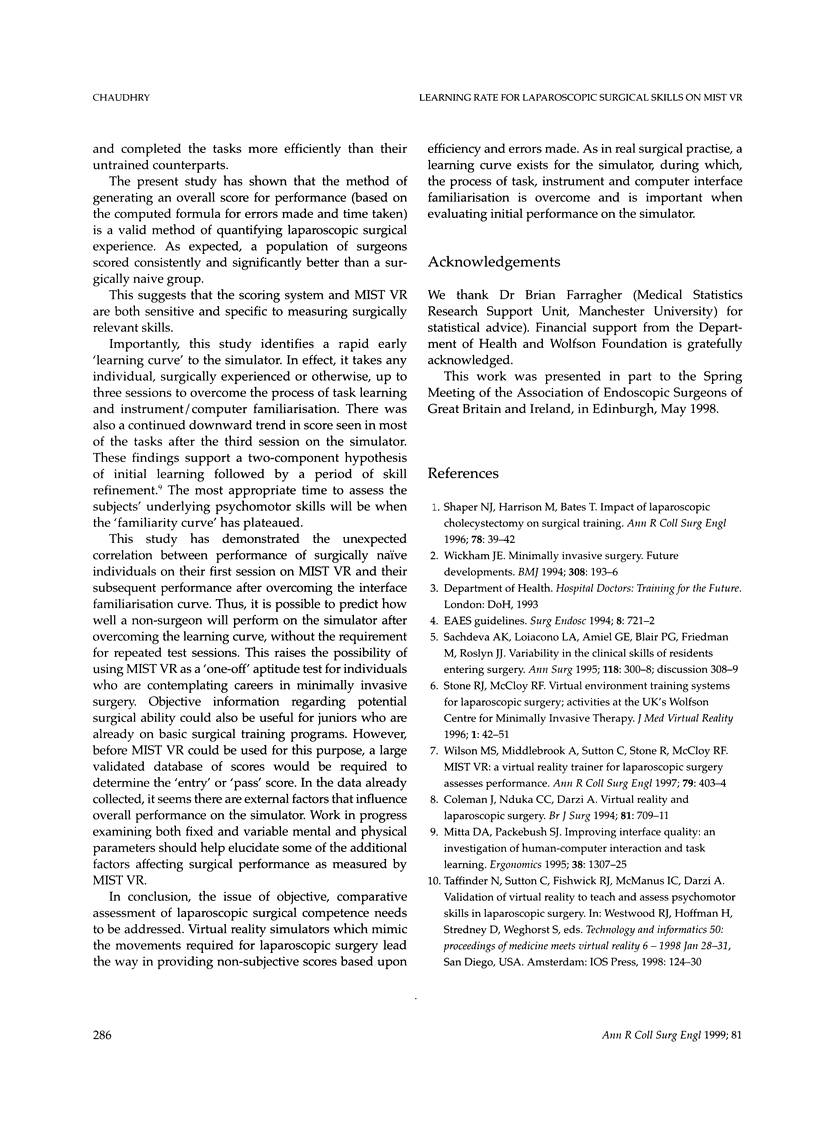
Selected References
These references are in PubMed. This may not be the complete list of references from this article.
- Mitta D. A., Packebush S. J. Improving interface quality: an investigation of human-computer interaction task learning. Ergonomics. 1995 Jul;38(7):1307–1325. doi: 10.1080/00140139508925190. [DOI] [PubMed] [Google Scholar]
- Sachdeva A. K., Loiacono L. A., Amiel G. E., Blair P. G., Friedman M., Roslyn J. J. Variability in the clinical skills of residents entering training programs in surgery. Surgery. 1995 Aug;118(2):300–309. doi: 10.1016/s0039-6060(05)80338-1. [DOI] [PubMed] [Google Scholar]
- Shaper N. J., Harrison M., Bates T. Impact of laparoscopic cholecystectomy on surgical training. Ann R Coll Surg Engl. 1996 Jan;78(1):39–42. [PMC free article] [PubMed] [Google Scholar]
- Wickham J. E. Minimally invasive surgery. Future developments. BMJ. 1994 Jan 15;308(6922):193–196. doi: 10.1136/bmj.308.6922.193. [DOI] [PMC free article] [PubMed] [Google Scholar]
- Wilson M. S., Middlebrook A., Sutton C., Stone R., McCloy R. F. MIST VR: a virtual reality trainer for laparoscopic surgery assesses performance. Ann R Coll Surg Engl. 1997 Nov;79(6):403–404. [PMC free article] [PubMed] [Google Scholar]


